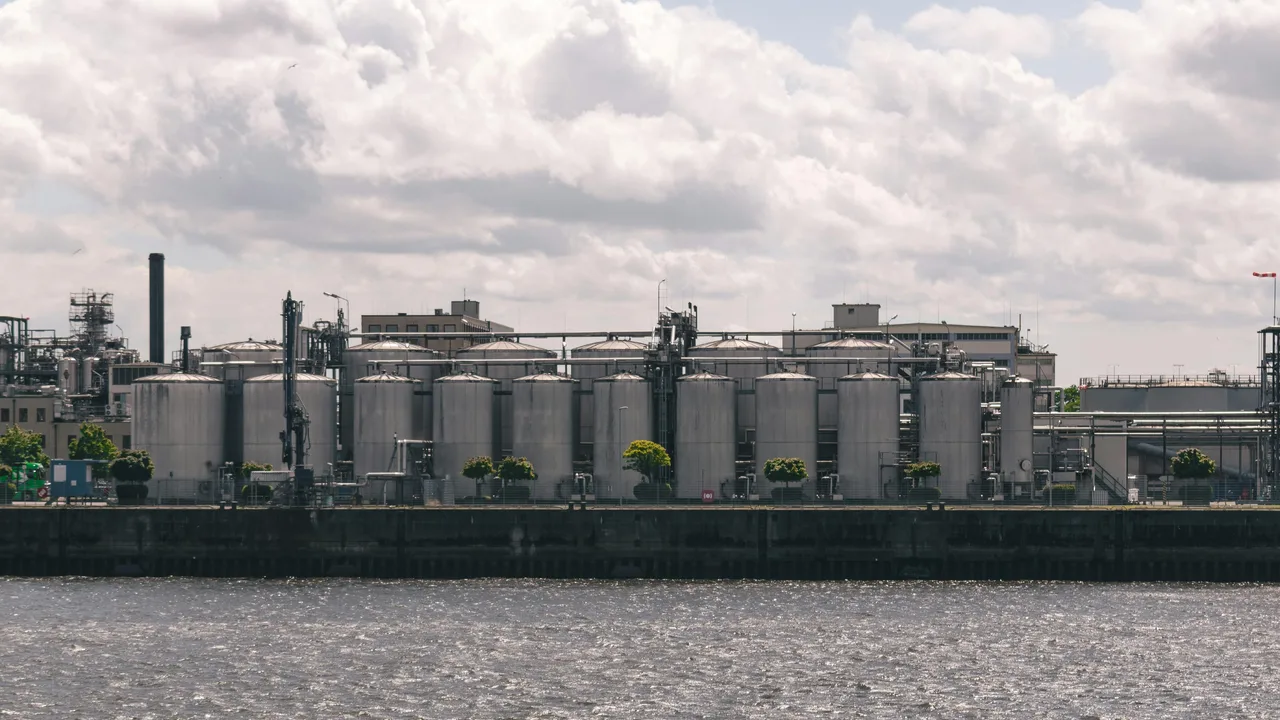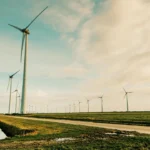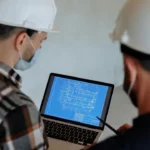In modern industrial engineering, the steel structure building has become a defining element in the construction of power generation facilities and industrial plants. As global demand for energy continues to rise, efficiency, safety, and sustainability have become the top priorities for energy facility design. Whether for a thermal, renewable, or hybrid power plant, steel-based architecture offers superior performance and long-term resilience compared to conventional construction materials.
Understanding Steel Structure Buildings in Energy Facilities
A steel structure building refers to a load-bearing framework made primarily from prefabricated steel components. This structural system is characterized by its high strength-to-weight ratio, rapid assembly, and exceptional adaptability. Unlike concrete frameworks, steel structures allow for wider spans, reduced foundation loads, and faster completion times—features essential for time-sensitive industrial plants and large-scale energy facility design.
In the context of power generation, steel buildings accommodate critical operations such as turbine halls, control centers, transformer bays, and fuel-handling units. Their open-span configurations provide unobstructed interior spaces for heavy machinery and technical maintenance, while modular designs make future expansion easy and cost-effective.
The Role of Steel Structures in Energy Projects
- Thermal Power Plants: Steel frameworks support boilers, turbines, and condensers, allowing high-temperature operations without compromising structural integrity.
- Renewable Energy Facilities: For solar, wind, or hybrid plants, steel provides durable enclosures for inverters, substations, and control systems.
- Hydropower and Nuclear Plants: Steel buildings resist seismic stress and high internal pressure, ensuring both safety and long-term reliability.
Energy Facility Design Considerations
Designing a steel structure building for an energy project involves far more than just architectural planning. It requires coordination among civil, mechanical, and electrical disciplines to ensure full integration of power systems. Engineers must account for high loads from rotating machinery, vibrations, and heat dissipation—all while maintaining safety and compliance with international codes.
Structural Optimization and Layout Planning
Structural optimization focuses on achieving the best balance between strength, weight, and cost. The most common framing systems include:
- Portal Frames: Ideal for long-span turbine halls and warehouses.
- Truss Systems: Suitable for roof structures requiring lightweight coverage.
- Space Frames: Used in expansive roofs where visual aesthetics and strength are equally important.
In energy facility design, engineers often prioritize clear internal height to accommodate cranes and mechanical ducts. A typical turbine hall may require a 25 m clear span with an overhead crane running on integrated steel beams. The precision of steel fabrication ensures millimeter-level alignment, which directly supports mechanical installation accuracy.
Advantages of Steel Structure Buildings for Industrial Plants

The success of the steel structure building in the energy sector lies in its unique combination of efficiency, safety, and sustainability. Below are the main advantages that make it the preferred solution for industrial plants and large power facilities.
Efficiency and Durability
- High Load Capacity: Steel provides excellent resistance to both static and dynamic loads generated by turbines, fans, and generators.
- Speed of Construction: Prefabrication and modular assembly can cut project schedules by up to 40%.
- Reduced Foundation Requirements: Lightweight superstructures lower foundation depth and material use.
These attributes allow investors to achieve faster commissioning of energy projects, leading to earlier power generation and quicker returns on investment.
Sustainability and Energy Efficiency
Another key advantage of using a steel structure building is sustainability. Steel is 100% recyclable and retains its strength after reprocessing, significantly reducing environmental impact. Energy-efficient insulation panels, ventilated facades, and skylight systems can be integrated into the design to reduce electricity consumption within industrial facilities.
According to Energy.gov, modern steel structures can achieve up to 30% energy savings through smart envelope systems and advanced coatings that reflect solar heat. When combined with renewable installations such as rooftop solar or daylighting designs, steel facilities support long-term carbon reduction goals.
Material Technology and Construction Process
The evolution of material science has further strengthened the case for steel structure building systems. Engineers now rely on high-tensile steels that resist deformation even under extreme thermal loads, ensuring long-term stability for energy facility design applications.
Advanced Materials and Coatings
| Material Type | Key Properties |
|---|---|
| High-Strength Structural Steel | Excellent yield strength for heavy machinery foundations. |
| Galvanized Coated Steel | Superior corrosion resistance in humid or coastal zones. |
| Fire-Resistant Coatings | Extended protection for high-temperature industrial processes. |
Fabrication and On-Site Installation
Most steel components for industrial plants are prefabricated in specialized workshops where quality and tolerances are precisely controlled. Once delivered to site, these elements are bolted or welded together using advanced lifting and alignment systems. This streamlined process minimizes errors, reduces waste, and ensures structural consistency across the entire project.
Experienced manufacturers like XTD Steel Structure specialize in designing and fabricating custom-engineered frameworks for complex power generation facilities. Their precision engineering and global experience enable clients to achieve faster project execution with uncompromised quality.
Case Studies of Steel Structure Energy Facilities
Across the world, many successful energy projects demonstrate the versatility and long-term reliability of the steel structure building. These case studies highlight how modern engineering and fabrication techniques have transformed complex energy facility design into efficient and sustainable realities.
1. Combined Cycle Power Plant, Asia
This project involved a 200 MW combined cycle gas turbine (CCGT) station. The turbine hall and auxiliary buildings were fully designed with steel framing to support heavy equipment and overhead cranes. The pre-engineered industrial plant structure reduced on-site welding by 80%, and prefabricated trusses allowed faster assembly despite challenging site conditions. As a result, construction time was cut by nearly four months.
2. Solar Energy Operation Center, Middle East
In one of the region’s largest renewable installations, a steel-built operations and maintenance center was constructed adjacent to a 1 GW solar field. The steel structure building featured wide-span frames, double-layer roof insulation, and high reflectivity coating to minimize heat absorption. Its modular design allows sections to be added easily as the solar plant expands, ensuring a scalable and future-ready facility.
3. Offshore Wind Power Maintenance Hub, Europe
Located along a coastal industrial park, this steel-framed facility houses turbine repair workshops and marine logistics control rooms. The structure uses corrosion-resistant galvanized members and an elevated base design to withstand saline air and tidal impacts. Its success highlights how steel can provide long-term protection even in extreme environments while maintaining full operational safety.
Cost, Maintenance, and Lifecycle Benefits
When evaluating investment for industrial plants or power generation sites, lifecycle cost is often a decisive factor. While the initial cost of a steel structure building may slightly exceed that of conventional methods, its durability, adaptability, and maintenance savings make it significantly more cost-effective in the long term.
Cost Efficiency and Long-Term Value
Lifecycle analysis shows that the total ownership cost of a steel building can be 20–25% lower over 25 years compared to concrete. This advantage comes from faster construction, reduced downtime, and lower maintenance needs. Moreover, prefabrication allows simultaneous fabrication and site preparation, shortening project schedules and enabling earlier power production — a key metric for investors in the energy sector.
The table below outlines how a typical steel structure building outperforms traditional systems in overall cost efficiency:
| Parameter | Steel Structure | Traditional Construction |
|---|---|---|
| Construction Time | 6–8 months (prefabricated) | 12–18 months (cast-in-place) |
| Foundation Cost | Low (lightweight structure) | High (heavy load-bearing walls) |
| Maintenance Interval | Every 8–10 years | Every 3–5 years |
| Expansion Flexibility | High (modular) | Low (structural constraints) |
Maintenance Optimization
Modern steel facilities employ protective coatings, corrosion monitoring sensors, and automated inspection systems. These smart tools ensure that maintenance is predictive rather than reactive. For example, sensors can detect micro-cracks or rust formation early, allowing targeted repairs instead of costly overhauls. With proper coating and inspection, a steel structure building can maintain its performance for more than 50 years with minimal degradation.
Future of Steel Structure Buildings in Energy Infrastructure
As the global transition toward clean energy accelerates, the role of steel structures in energy facility design continues to grow. The next generation of facilities—hydrogen plants, battery storage hubs, and carbon-capture stations—will rely on adaptable, modular structures to meet evolving technological demands. Steel’s flexibility and strength make it an ideal material for this future-ready infrastructure.
Integration with Smart Grids and Sustainable Architecture
Smart grids and industrial automation are redefining the concept of energy infrastructure. A steel structure building can integrate smart monitoring systems, rooftop solar panels, and intelligent HVAC systems that respond to energy consumption in real time. Digital twins of these structures are now used in design stages to simulate performance, energy flow, and maintenance cycles.
Furthermore, sustainability is no longer optional — it’s a core requirement. Modern steel structures are designed following green building standards such as LEED and BREEAM. Their recyclability and reusability make them essential for countries seeking to minimize construction waste and carbon footprints. As industries push toward net-zero goals, the adaptability of steel construction will be a key enabler for sustainable energy expansion.
Environmental and Operational Advantages
The environmental benefits of steel structures extend far beyond durability. Prefabrication drastically reduces on-site emissions, noise, and material waste. Transportation logistics are streamlined due to modular packaging, minimizing heavy vehicle movement. For large industrial plants, these factors contribute to a smaller environmental footprint and better community relations.
Operationally, the precision of steel fabrication ensures smoother equipment alignment, which translates into higher mechanical efficiency for energy production. Clear spans without internal columns allow flexible layouts for turbines, boilers, or generators. In many facilities, this open space also supports future equipment upgrades without structural modification, improving long-term adaptability.
Technological Innovations and Digital Construction
Digital technology is transforming how steel structure building projects are delivered. Building Information Modeling (BIM) and computer-aided design allow engineers to simulate loads, vibrations, and temperature effects before actual fabrication. This digital precision ensures that every component fits perfectly during installation, minimizing delays and material waste.
Automation in fabrication—such as robotic welding and laser cutting—has also improved accuracy and consistency. These advancements guarantee the dimensional precision needed for sensitive energy facility design, where even a small misalignment can impact turbine or generator performance.
Conclusion
The evolution of the steel structure building has fundamentally changed how the energy sector approaches construction. By combining speed, precision, and sustainability, steel frameworks provide the backbone for efficient industrial plants and high-performance energy facility design. Their adaptability supports both traditional and renewable energy systems, making them indispensable in modern infrastructure.
As nations strive for energy independence and sustainability, steel will remain a cornerstone of progress—delivering reliable, eco-friendly, and economically viable solutions. For companies seeking proven expertise in the engineering and fabrication of energy structures, XTD Steel Structure continues to lead globally in innovation, design, and construction excellence.



